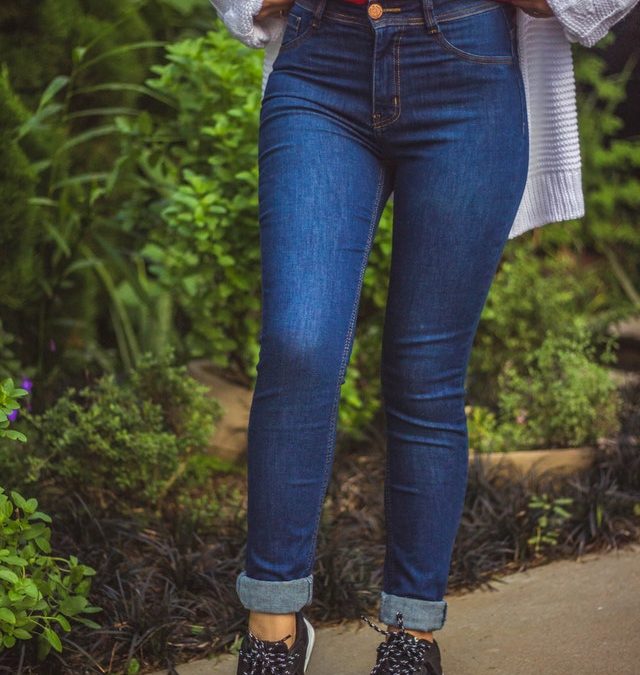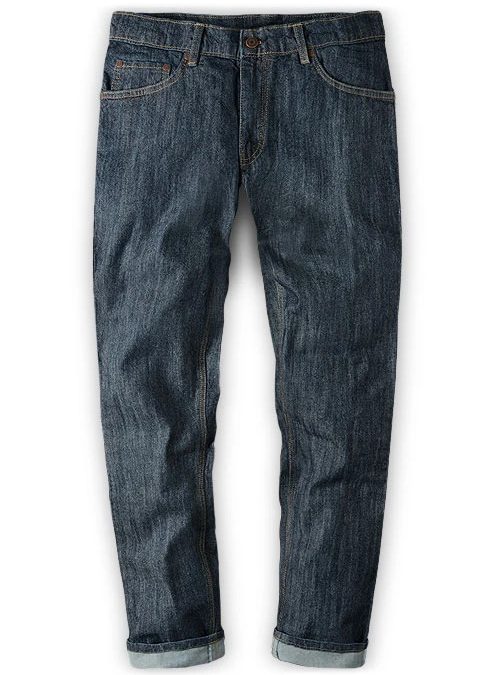
by MakeYourOwnJeans | jeans |
Have you heard of overdyed jeans? They’ve become a popular alternative to traditional jeans. All jeans, of course, are dyed. They are made of denim, which is cotton with a warp-faced weaving pattern. In its natural state, cotton is white. To achieve a different color, such as indigo or black, it’s dyed. Overdyed jeans are simply dyed more heavily than their traditional counterparts. For a better understanding of overdyed jeans why they’ve become so popular, keep reading. What Are Overdyed Jeans? Overdyed jeans are characterized by their use of a large amount of dye during production. Nearly all jeans are dyed during production. Dyeing, of course, involves the use of colored liquid, known as dye, to change the color of a garment. In its natural state, cotton is white. To produce jeans in a different color, manufacturers must dye them. Overdyed jeans are simply exposed to a larger amount of dye during production than traditional jeans. Breaking Down the Dyeing Process In the past, most jeans were dyed with natural indigo. Natural indigo is a type of dark blue dye that’s derived from the dried leaves of an Asian plant called Indigofera tinctoria. Historians believe that natives have used this plant to create dye for centuries, with some of the earliest reports of its use dating back to the 8th century BC. In more recent years, though, natural indigo has been replaced with synthetic indigo. Synthetic indigo features a similar dark blue color as natural indigo. While natural indigo is derived from plant leaves, however, synthetic indigo is an artificial dye. Synthetic indigo consists of a similar color, and...

by MakeYourOwnJeans | jeans |
Do your jeans regularly suffer from static cling? It’s a common problem that affects nearly all types of clothes — and jeans are no exception. Static cling involves the buildup of static electricity. When static electricity builds up on the surface of a garment, it will create a charge that “pulls” other objects to it. Static cling can result in dust, debris and lint sticking to the surface of your jeans. Fortunately, you can prevent static cling by following a few tips. #1) Choose Heavyweight Jeans Heavyweight jeans are less likely to suffer from static cling than their lightweight counterparts. They are typically thicker and denser. With these properties, heavyweight jeans are better protected against static cling. If you’re shopping for a new pair of jeans but want to avoid the headache of static cling, check the weight of the denim. Heavyweight jeans are defined by their use of heavy denim. They are typically constructed of at least 14 ounces of high-quality denim. #2) Dry for a Shorter Period You can protect your jeans from static cling by drying them for a shorter period. Most people dry their jeans in a tumble clothes dryer. Tumble clothes dryers, of course, use heat to remove moisture from wet and recently washed clothes. In doing so, they leave clothes dry, which is a risk factor for static cling. Dry clothes, including dry jeans, can become statically charged more easily than moist or wet clothes. A simple solution is to dry your jeans for a shorter period. Rather than drying them for a full cycle, try drying your jeans for just 10 to...

by MakeYourOwnJeans | jeans |
Do your jeans feel uncomfortably stiff? While denim is strong and durable, it’s not particularly stretchy. Rather, denim by itself is somewhat stiff, which can make standard jeans uncomfortable when worn for long periods. Fortunately, stretch jeans are available as a solution. Stretch jeans are still made of denim. All jeans are made of cotton-based denim — and stretch jeans are no exception. They are known as “stretch jeans,” however, because they are stretchier than standard jeans. Standard jeans are made entirely of denim, whereas stretch jeans are made of both denim and an elastic material. Not all stretch jeans are the same. You can find them in different colors. Along with blue, alternative colors in which stretch jeans are made include black, white, red, green and even yellow. You can also find them in different compositions, including 1% and 3%. Most stretch jeans can be classified as either 1% or 3%, depending on how they are constructed. When buying stretch jeans, you’ll need to decide whether 1% to 3% is right for you. What’s the difference between 1% and 3% stretch jeans exactly? Overview of 1% Stretch Jeans 1% stretch jeans are characterized by a composition consisting of 99% denim and 1% elastic material. They look like ordinary, standard jeans. While standard jeans are made entirely of denim, though, 1% stretch jeans have a small amount of an elastic material mixed into them. 1% stretch jeans are specifically made of 1% elastic material, hence their name. A typical pair of 1% stretch jeans will contain 1% lycra, polyester or a similar elastic material. It’s a small amount that...

by MakeYourOwnJeans | jeans |
Jeans have been around for over a century. They were introduced in the mid-to-late 1800s, and since then, they’ve become recognized as the single most popular style of men’s and women’s trousers. When shopping for a new pair of jeans, however, you may come across slater jeans. Available for sale here at MakeYourOwnJeans, slater jeans feature the same appearance as traditional denim, but they are subtle nuances between them. What are slater jeans exactly, and why you should choose them? Overview of Slater Jeans Slater jeans are characterized by their use of slater denim. It’s a special type of premium, high-quality denim that’s generally heavier than other types of denim. Most slater jeans are made of 12 ounces of slater denim. With slater denim, they offer a stylish appearance while maintaining a strong and durable construction. Slater Jeans vs Traditional Jeans While they may look the same, slater jeans are different than traditional jeans. Traditional jeans are made of regular denim. All types of denim, of course, consist of cotton. This applies to both regular denim and slater denim. Whether you choose a pair of traditional jeans or slater jeans, chances are they’ll be made of cotton. Slater jeans are simply made of a more refined type of cotton-based denim, which is known as slater denim. Most slater jeans are hard washed. In other words, they are submerged in hot water during production. A process known as hard washing, it’s designed to soften the fabric from which they are made. Hard-washed jeans are almost always softer than their counterparts. When submerged in hot water, the otherwise stiff denim becomes...

by MakeYourOwnJeans | Fashion |
Have you discovered lots of tiny fuzzballs on your favorite pair of jeans? Known as pilling, it’s a common phenomenon with many types of garments. Shirts, sweaters, shorts and jeans can all experience pilling. When this occurs, hundreds or even thousands of small fuzzballs will accumulate on the surface. It typically won’t damage or otherwise harm the garment. Nonetheless, pilling is a frustrating phenomenon that’s best avoided. You can protect your jeans from pilling, however, by taking a few basic precautions. Wash With Liquid Detergent Washing your jeans with liquid detergent will lower the risk of pilling. As you may know, there are two types of laundry detergent: liquid and powder. While they can both remove dirt and eliminate stains, liquid detergent is gentler than powder detergent. The problem with powder detergent is that it has an abrasive texture. It consists of powder grains that can rub away the surface of your jeans. If you regularly wash your jeans with powder detergent, some of the denim fabric on the surface will come off. Eventually, this denim fabric may bunch up into fuzzballs or pills. Washing your jeans with liquid detergent will prevent this from happening, as liquid detergent doesn’t have the same abrasive texture as powder detergent. Choose the Gentle Wash Setting In addition to using liquid detergent, you should choose the gentle wash setting when washing your jeans. The gentle wash or cycle setting will protect your jeans from pilling. Most washing machines have multiple cycle settings. If you inspect the settings on your washing machine, you should see one for either gentle or delicate. Gentle and delicate...
















